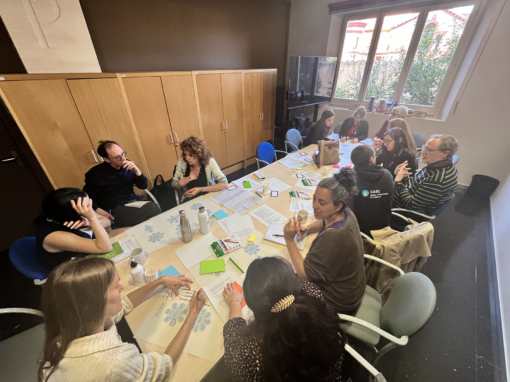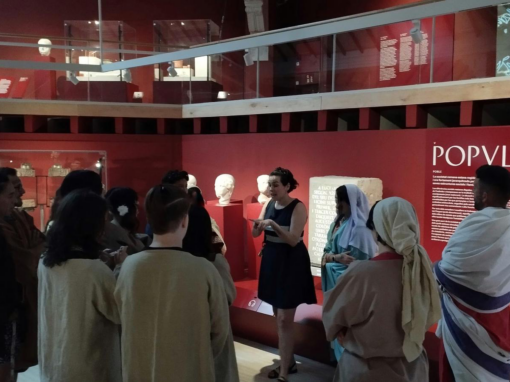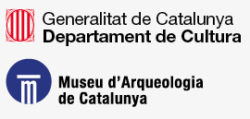Michela Benente, Gianluca D’Agostino, Daniel John Mangano, Valeria Minucciani, Francesco Paganelli
Department of Architecture and Design, Politecnico di Torino
Sònia López Rovira, Joan Muñoz, Sandra Tello Grau
Museu d’Arqueologia de Catalunya
Neuroscientific experiments took place in June 2025 at MAC-Barcelona as part of META-MUSEUM, a European project to engage new audiences and foster emotional engagement with cultural heritage.
With the support of neuroscientific methods, the European project META-MUSEUM (Moving Emotions towards confidence in the Transformative Appropriation for a Meaningful Understanding of cultural heritage: a neuroScientific approach to EUropean Museums) is exploring the relationship between cognitive and emotional responses to cultural heritage, aiming to increase citizens’ awareness and confidence in the complex contemporary reality.
Indeed, in the last years Europe and the wider world is facing multiple crises and rapid transformations – such as the COVID-19 pandemic, economic instability, wars, climate emergency, etc. – which are profoundly affecting people’s wellbeing andcausing greater fears about the future. These overlapping challenges have generated anxiety, a sense of insecurity, and a shared feeling of being unable to keep up with constant change. Since change is an inevitable aspect of human society, what is most needed is resilience: the capacity to adapt, transform, cope and grow through change.
The concept of resilience is also deeply connected to the transformative nature of cultural heritage, the main topic of the European funding call. Indeed, cultural heritage is not static but evolves continuously also as a bearer of values and meanings that are interpreted by the society differently over time. Historically, however, this process of interpretation has been mostly dominated by scholars, who create and present information, simplified, for the general audience. This communication leaves little room for dialogue or space for the public to meaningfully engage with narratives about cultural heritage. This lack of interaction has hindered citizens’ sense of belonging and attachment to cultural heritage, generating also feeling of loss of control, low self-esteem and low individuals’ confidence.
Understanding cultural heritage as something constantly changing can help citizens to see it not as a static legacy of the past, but as a living reflection of contemporary life. This perspective can strengthen people’s attachment to it while also offering a valuable lesson for society at large: by embracing their active role in “transforming” cultural heritage, citizens can personally connect and intimately appropriate to it, regaining a sense of control, confidence, and self-esteem, which equips them to face even the changes of the modern world.Recognizing that cultural heritage belongs to everyone, and that all citizens have the right to interpret, transform, and co-create it, is fundamental. International frameworks already acknowledge cultural heritage as a human and universal right, but the full potential of this right – beyond access, towards interpretation, personal appropriation and transformation – has yet to be fully realized. Projects such as META-MUSEUM seek to address this gap, particularly in fields like archaeology, which has often been perceived as the domain of experts only and difficult to be understood by most of the population.
META-MUSEUM aims to overcome the traditional vision of cultural experiences, to include people, activities and places in a pervasive, unconventional and emotional way, developing ways of communicating cultural heritage that can move the publics and engage them personally. The overall methodology of the project is based on a strong interaction between theory and a robust experimental backbone: a theoretical framework is being developed in an iterative process throughout the project implementation, aiming at designing principles for transformative cultural experiences, to make people perceive cultural heritage in an empathic way, understanding its transformative nature and increasing confidence and resilience. At the same time, the experimental core of META-MUSEUM aims at investigating neurophysiological parameters and cognitive responses, i.e. how people are emotionally involved during different cultural experiences. A series of experiments have already been implemented in the three Associated Partner museums (the MAC in Barcelona, the MuséoParc in Alésia and the Egyptian Museum in Turin), but more will be conducted also in hospitals and urban contexts, in order to involve a wider audience. META-MUSEUM, with the support of neuroscientific research, is studying the encounter with cultural heritage as a “transformative” experience, with a view to supporting not only the growth of all citizens, but also their resilience, empathy and confidence in the future at a complex time for Europe and the world.
A first campaign of measurements has been already implemented during the spring 2025. This session aimed at investigating the status quo, i.e. monitoring the participants’ responses (emotional and cognitive) without inserting any further stimuli in respect of the current museum exhibits. In a second session, which will take place in 2026, participants will be instead offered cultural experiences also through physical and digital prototypes developed by META-MUSEUM in accordance with the theoretical framework to offer narrative solutions and participatory experiences to generate empathic responses in visitors, encouraging active participation and calling on them to interpret and co-create content. But researchers will not stop there: META-MUSEUM will also investigate encounters with heritage outside traditional venues, such as hospital and urban environments, where they will also be able to involve people who do not usually visit cultural sites.
As mentioned, at MAC, META-MUSEUM employed neuroscientific methods to form the basis of experimental assessments within the museum environment. This experiment held in June 2025 collected informative data reflecting the emotional and cognitive state of museum visitors. Using scientifically validated neurological sensors, researchers were able to capture meaningful data allowing for insights elaborated upon corresponding to participants’ attention and emotional arousal during the visit. In particular, at MAC the measurement campaign has been implemented in a portion of the museum which was identified by researchers and curators as suitable for accurate testing: the exhibit IMPERIVM. Històries romanes, opened in the spring of 2024 (Figures 1 and 2). Based on the presentation of more than 200 objects from the Roman and late antiquity periods, IMPERIVM is a permanent exhibition that narrates what it was and what political, economic, social and cultural traits structured the Roman Empire, considered the first globalized society in the West.
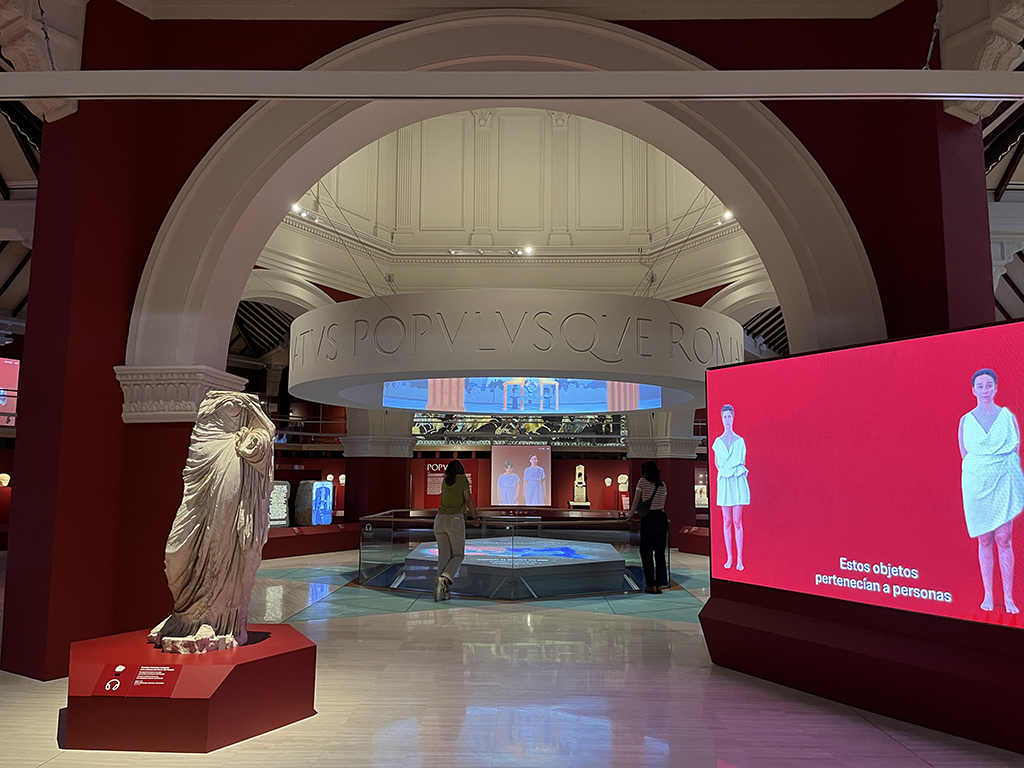
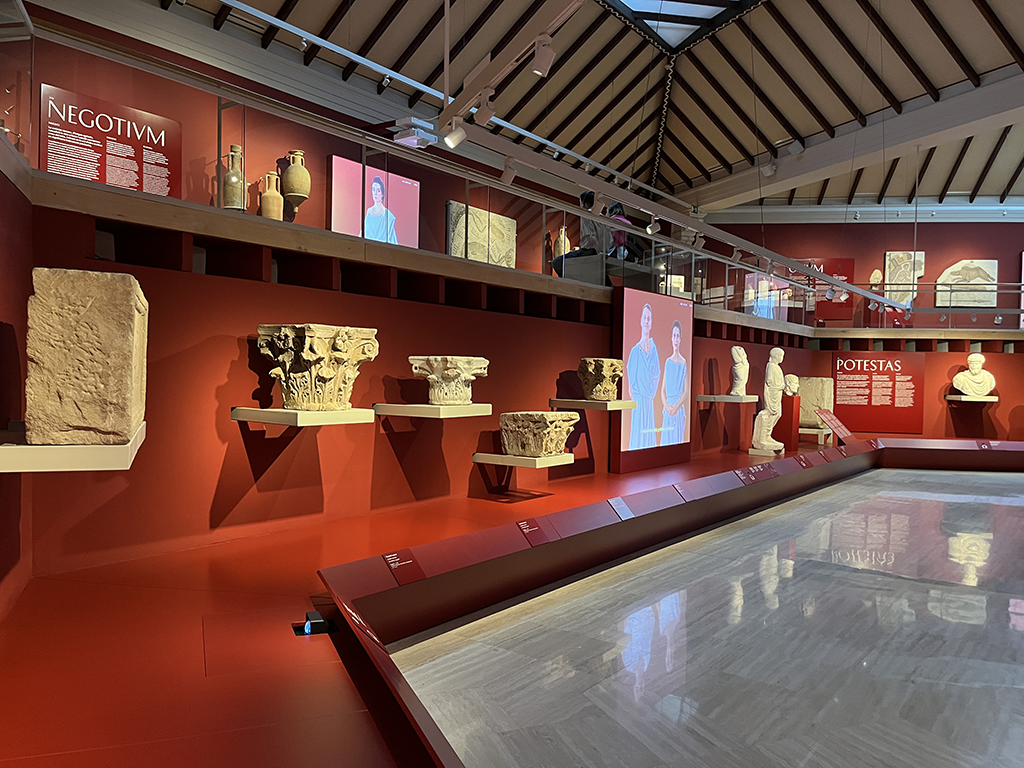
After completing the pre-experience questionnaire, participants were invited to visit the first half of the exhibition for a 30-minute period, with the option of using the audio guide provided by the museum. Upon expiration of the designated time frame, participants were invited to proceed to the Gallery upper floor, where colleagues from Università La Sapienza Roma made them wear some neurophysiological devices, the Mindtooth EEG headset and the Shimmer device for computing the Skin Conductance Level (SCL) and accompanied them on selected parts of the visit path (Fig. 3).
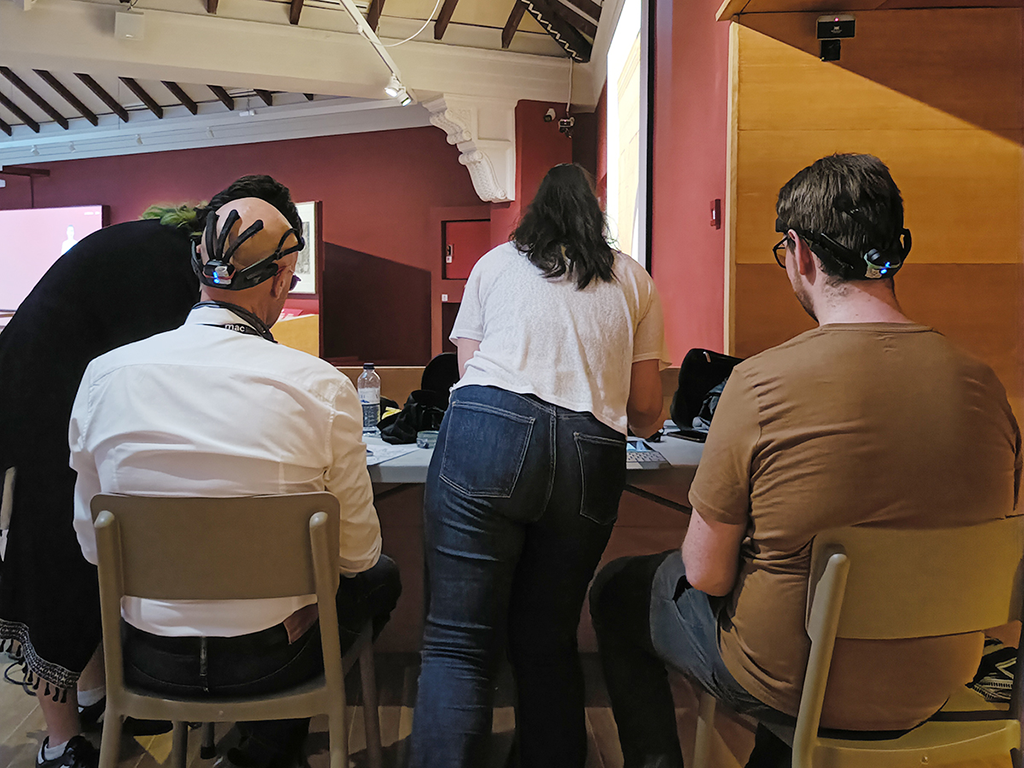
Out of ten audiovisual items, researchers and curators selected two videos (OTIVM and HEREDITAS)and one video mapping about the mosaic of the Circus Maximus in the Gallery to carry out the neurophysiological measurements (Fig. 4 and 5).
Thanks to the support of the MAC personnel, with Sonia Lopez Rovira and Joan Munoz at the forefront, who launched a communication campaign through its newsletter and local networks approximately one month before the implementation of the experiments, 95 volunteers interested in the project were recruited. The experimental campaign was well received by the local community, including a few archaeologists and experts in the field, as well as people who were curious and intrigued by the application of neuroscience in museums.
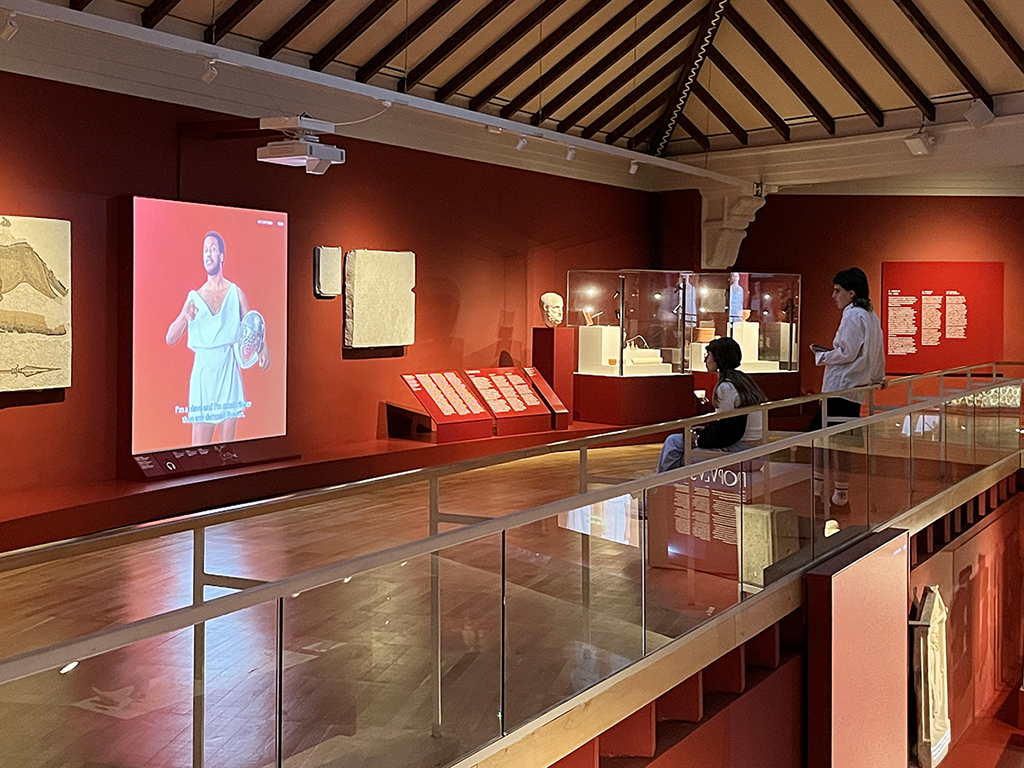
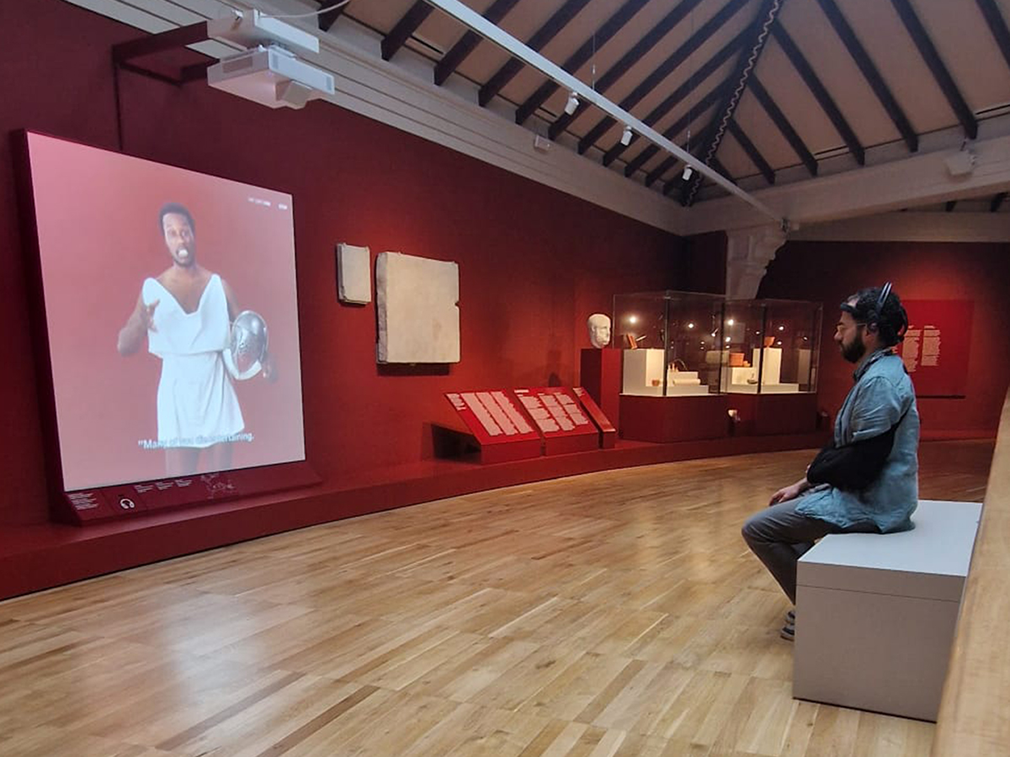
The analysis and interpretation of the results is still ongoing and will provide fundamental food for thought and operational insights for the development of the next steps of the project, starting with the creation of a number of physical and digital prototypes that will be placed within the museum spaces for the second session of measurement in museums. They will offer narrative solutions that will support visitors in understanding the transformative nature of cultural heritage, through emotional and participative components.
META-MUSEUM is coordinated by the Politecnico di Torino and funded by the European Commission as part of the Horizon Europe programme (call HORIZON-CL2-2023-HERITAGE-01-04: “Cultural heritage in transformation – facing change with confidence”). The project started in October 2024 and will last three years, involving 14 partners (including the MAC Barcelona) from 10 European countries: Italy, France, Germany, Greece, Lithuania, the Netherlands, Poland, Romania, Spain and Sweden.


